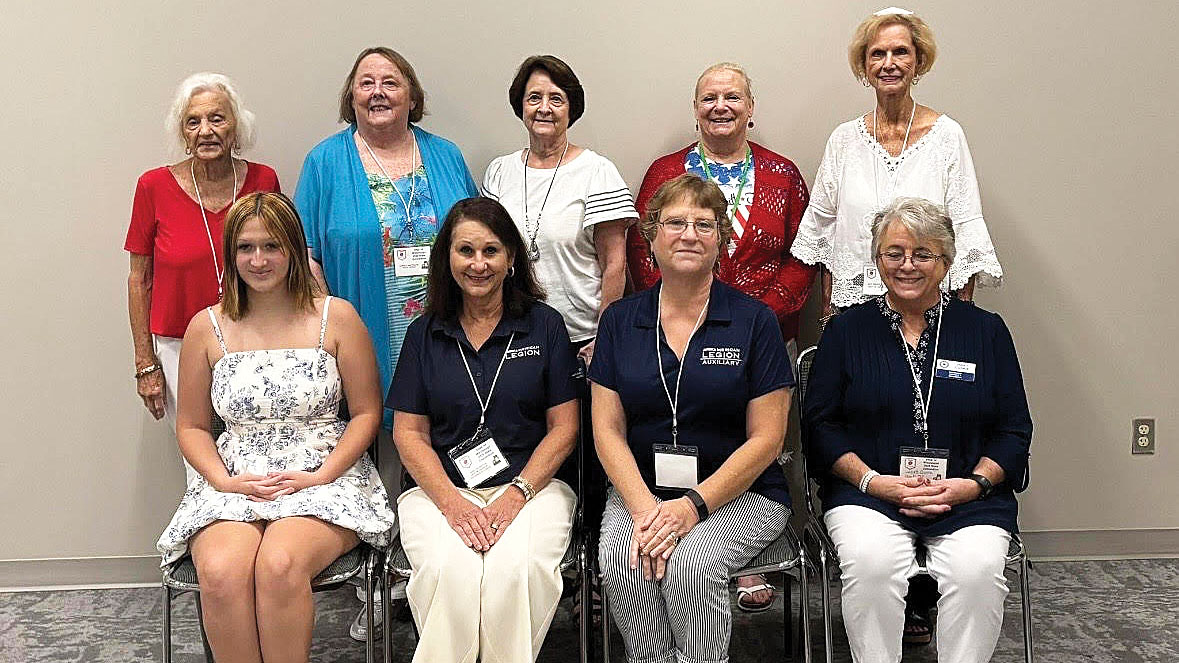Mississppi State’s Deer Professor research, life dedicated to conservation
Published 8:01 am Monday, July 8, 2024

- Mississippi State University's Deer Lab Co-Director Steve Demarais retired last week. (Courtesy Photo | MSU Office of Public Affairs)
STARKVILLE — Mississippi State’s Deer Lab former Co-Director Steve Demarais is a member of the Mississippi Chapter of The Wildlife Society, Southeastern Association of Fish and Wildlife Agencies, Southeastern Section – The Wildlife Society and The Wildlife Society. His career is heavily involved in conservation efforts.
Over his career at MSU, Demarais worked on crucial research projects including the nutritional impacts on deer, habitat management and diseases including Chronic Wasting Disease.
One of the first projects Demarais worked on at Mississippi State looked at timber management practices, specifically site preparation after a timber harvest. He said timber companies in the 1990s would prepare the ground to plant trees in rows, where they would grow for 25 to 28 years. Companies wanted to improve the way they could grow the trees which included the use of herbicides to control competing vegetation.
Trending
Herbicide use became an issue because land users and the general public wanted to be more ecologically minded and concerned about run-off. Demarais said at the same time, timber companies realized they could optimize the return on investment and wood grown too fast didn’t have a good quality.
“For those reasons, the timber companies decided we need to dial back the herbicide a little bit,” he said.
Hunters leased the clearcut lands to hunt and there was a big controversy over the use of herbicides. Timber companies had formed the National Council for Air and Stream Improvement and the group worked with MSU on the research project.
“They needed answers to optimize timber production and wildlife value,” Demarais said. “We did a research project in the Lower Coastal Plain looking at site prep methods. We learned a moderate amount of herbicide worked for both timber and wildlife. We learned if you don’t get rid of the waxy leaf browse you can’t produce enough high quality forage for deer. We were able to develop prescriptions to optimize wildlife resources and timber revenue at stand establishment.”
“Our subsequent timber management research developed prescriptions involving a selective herbicide and prescribed fire to optimize turkey, quail, and deer habitat during mid-rotation management, after stands are thinned for pulpwood production.”
The neat thing about the project, Demarais said they were able to find solutions beneficial to both sides.
Trending
Population management
MSU’s research helped shape the antler restrictions and age class seen in Mississippi today. Demarais said during the 80s and 90s, the Mississippi Department of Wildlife, Fisheries and Parks tried to get people to not shoot the first legal buck they saw. MSU had research showing the antler size gets bigger and bigger with age and educated hunters if they wanted bigger antlers they needed to let bucks live longer.
“A lot of landowners wanted bigger antlers. An easy fix for that is antler regulations. They are designed to protect younger age bucks,” Demarais said. “In 1995, Mississippi passed a law to protect deer. To be legal, they had to have four or more points.”
The restriction protected a large percentage of yearling bucks but not all. Bronson Strickland, co-director of the MSU Deer Lab, led this research looking at the success or effect of the regulation on deer.
Research findings showed the size of two-year olds and three-year old bucks were smaller than the average of those prior to the regulations. Demarais said this was due to hunters high grading and removing bigger-antlered deer from the yearling age class.
MSU showed the four point rule didn’t work and the MDWFP used a tool from the deer lab to look at the effects of different antler restriction strategies. MDWFP chose a beam and spread length to protect a 100 percent of the yearling bucks. It is still in use today.
In the Central Hills region, deer must have a minimum main beam length of 13 inches long or a minimum inside spread of 10 inches. The new restrictions insured that all bucks 1.5 years of age were protected.
“It’s impossible to regulate a perfect solution for all deer management issues, Demarais said, so now we promote hunters to age the deer, evaluate his antler size relative to his age, and decide if his harvest is in the best interest of the management plan. If he has good potential, then you let him live to grow larger antlers.”
Hunters can use the Mississippi State Deer Lab’s Deer Aging phone application to learn the difference in body characteristics for different ages of bucks.
Tackling genetic questions
MSU Deer Lab worked on another project in the early 2000s dealing with both population and habitat management. At the time, hunters in the Lower Costal Plain complained their deer were genetically inferior to deer from the Mississippi Delta and thought the solution would be to introduce better genes into the local population.
Demarais said MSU and MDWFP thought the issue was one of habitat quality and nutrition.
The lower coastal plain land use and soil quality was not conducive to growing quality deer habitat. Properties which had a higher percentage of the property planted in plantation pines had bucks with smaller antlers. The lower soil quality produced lower quality forages that didn’t meet requirements for reproduction and body and antler growth.
We needed further experimental proof to address landowner concerns, so we brought bred does from the Lower Coastal Plain and the Delta regions to the Deer Lab research pens.
“Over a ten year period, we produced fawns and raised them on optimal nutrition. We bred them withinb their source regions and continued optimal nutrition.,” Demarais said. “After two generations, the LCP bucks’ antlers and bodies were growing as big as those from the delta. This proved it wasn’t a genetic limitation, it was all about the quality of food.”
“When we talk about improving forage quality through management, we are talking about generational improvement in habitat quality, at least two generations of deer. It is an investment in the future,” Demarais said. “We try to teach our landowners here and elsewhere that you need to manage the habitat to improve quality for multiple generations. It’s not a quick fix, but you can grow really big deer.”
Timber stand improvement, thinning of pine plantations, prescribed burning and other tools make an impact and can improve nutrition for deer and thus the quality of deer. Demarais said it is not easy but you can be successful by faithfully applying the concepts in population and habitat management.
The MSU Deer Lab has worked to bring the state and arguably the nation together in working towards improving habitat for deer.
Demarais won numerous awards and honors in his career according to his bio on the MSU Forest and Wildlife Research Center webpage.
Fellow
The Wildlife Society
● Hamilton Lifetime Achievement Award
National Deer Association
● SEC Faculty Achievement Award
Southeast Conference
● Kleberg Award for Applied Wildlife Research
The Wildlife Society
● Taylor Chair in Applied Research and Instruction
Funding obtained from Taylor Foundation (2018-2023)
● Conservation and Stewardship Award
Boone and Crockett Club
● Ralph E. Powe Research Award
Mississippi State University
● Deer Management Career Achievement Award
The Wildlife Society and Deer Study Group
● Outstanding Media Product
The Wildlife Society, Mississippi Chapter
● Publication and Creativity Award
Oklahoma Chapter of the Wildlife Society
● Outstanding Peer-Reviewed Article
Miss Chapter of The Wildlife Society
● Outstanding Popular Article
Miss Chapter of The Wildlife Society




